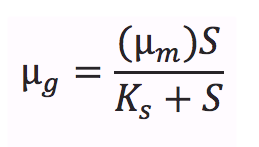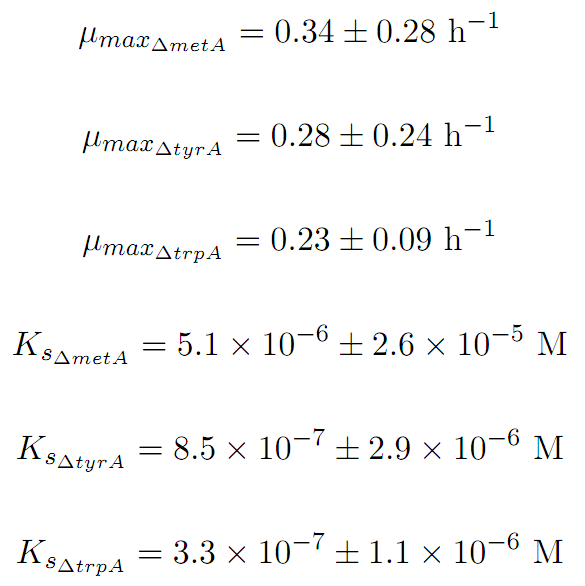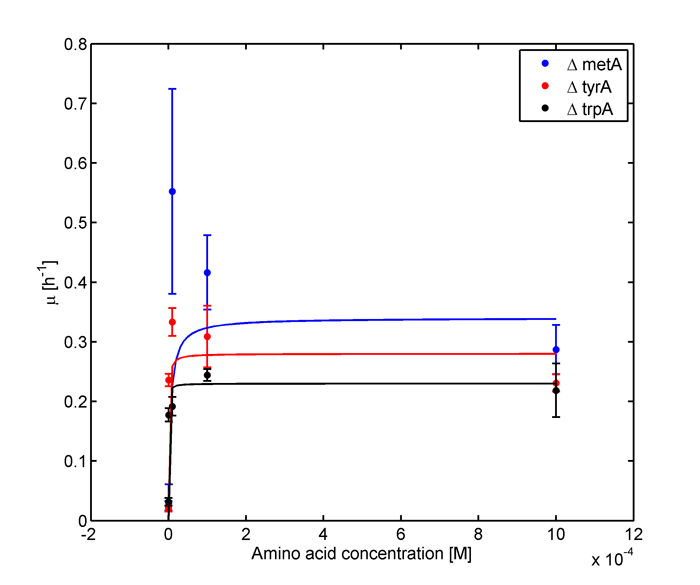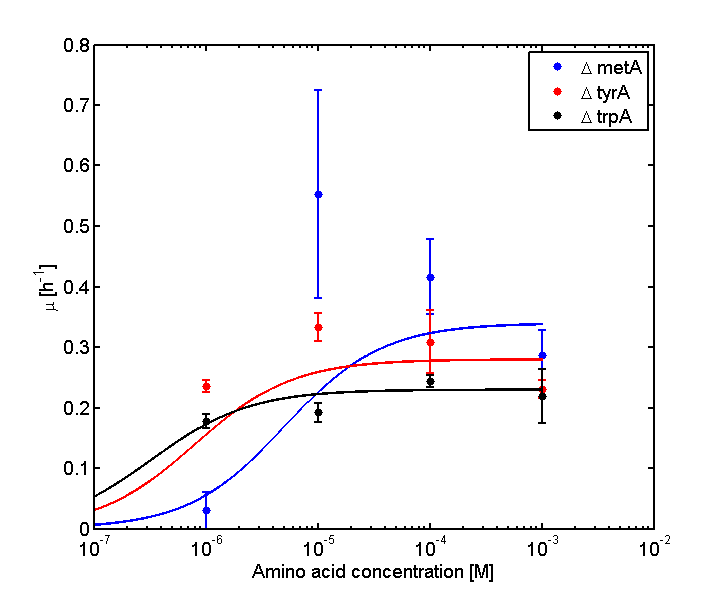Team:British Columbia/Consortia
From 2012.igem.org

Description:
The three interdependent E. coli auxotrophs studied in our project are ΔmetA, ΔtrpA, and ΔtyrA. In order to motivate how to set up our co-culture experiments, we wanted to model the population dynamics
This model is designed to predict the consortium’s population dynamics, based on the measured amino acid excretion rates without tuning them. However, the code of the model is written in a way that when we decide to tune the population by adding in different concentrations of inducers, we can simply update the excretion and consumption rate equations. Thus this model is valid for both situations. It can even be generalized to be used by any interdependent ecoli consortium when Met, Trp, and Tyr are the limiting nutrients/substrates for their growth, with some modifications.
The key assumption for this model is that the Methionine, Tryptophan, and Tyrosine are the only growth limiting substrates for MetA-, TrpA-, and TryA- ecoli knock outs respectively.
Monod equation is the most commonly used model for microbial growth and it can reasonably fit a large variety of data empirically[1]. Also, it shares the key assumption described above. Thus it is decided to be one of the fundamental governing equations for this model.
For those who are not so familiar with the Monod equation, its key equation states like this:
where µm is the maximum specific growth rate, S is the limiting substrate concentration, and Ks is the concentration of the limiting substrate when the specific growth rate is half of the maximum (Ks=S when µg=1/2µm) [1]. Ks has the name of saturation constant or half-velocity constant[1].
Equations:
Constants:
Some of the key constants for the Monod Kinetics are obtained through analyzing various growth rates under different known amino acid concentrations. The values are listed as follows:
and its wet lab data used is mainly based on the following graphs:
<--!frame!-->
Also, we assumed that the amino acid consumption is solely depended on the cell growth and not the cell self maintenance. thus they are
Matlab Code
References
[1] Shuler, ML; Kargi, F; Bioprocess Engineering Basic Concepts, 2002 2nd edition. Prentice Hall PTR.
 "
"



